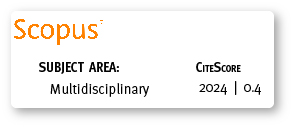Bioleta Mata: una planta que interactúa por medio de realidad aumentada
Resumen
RESUMEN
Este documento describe una planta real dotada de un vehículo inteligente que le permite navegar por ambientes de interiores, responder a estímulos del ambiente, interactuar con seres humanos a través de realidad aumentada, detectar la presencia de fuego y solicitar ayuda por medio de Twitter. Los experimentos muestran que no hay falsos positivos en la detección de fuego, y que la detección de fuego es superior al 50% de las lecturas del sensor en distancias menores a 5 m, con línea de visión entre el sensor y la llama. La comunicación por radios XBee en ambientes de interiores es efectiva hasta por lo menos 25m de distancia entre los radios.
Palabras clave: Robot móvil, detección de fuego, realidad aumentada, evitación de obstáculos, Twitter.
ABSTRACT
This paper describes a real plant that features an intelligent vehicle. The plant navigates through indoor environments, responds to environmental stimuli, interacts with humans through augmented reality, detects fire, and asks for help via Twitter. Experiments show that there are no false positives in the detection of fire, and that the detection of fire is greater than 50%, for distances along the sight line between the flames and the sensor of less than 5 m. Communication by XBee radios in indoor environments is effective up to 25 m at least.
Keywords: Mobile robot, fire detection, augmented reality, obstacle avoidance, Twitter.
Descargas
Métricas
Citas
Ashton, K., 2009. That ‘internet of things’ thing. RFiD Journal, 22, 97-114.
Atzori, L., A. Iera, G. Morabito, 2010. The internet of things: A survey. Computer Networks, 54(15), 2787-2805.
Cassinelli, A., 2014. Toro-bots. Disponible en http://www.k2.t.u-tokyo.ac.jp/members/alvaro/ works/index.html.
Digi International Inc., 2014. Xbee-pro rf modules. Product manual v1.xex-802.15.4 protocol. Disponible en https://www.sparkfun.com/datasheets/Wireless/Zigbee/XBee-Datasheet.pdf.
Dunkels, A., J. Vasseur, 2010. IP for smart objects, internet protocol for smart objects (IPSO) alliance, white paper #1. Disponible en http://www.ipso-alliance.org/wp-content/media/why_ip.pdf.
Giesler, B., T. Salb, P. Steinhaus, R. Dillmann, 2004. Using augmented reality to interact with an autonomous mobile platform.In: Proc. IEEE Int. Conf. on Robotics and Automation, ICRA’04, 1, 1009-1014.
Green, S.A., X. Chen, M. Billinghurst, J.G. Chase, 2008. Collaborating with a mobile robot: An augmented reality multimodal Interface. In:Proc. 17th IFAC World Congress (IFAC WC2008).
Hashimoto, S., A. Ishida, M. Inami, T. Igarashi, 2011. Touchme: an augmented reality based remote robot manipulation. In: 21st Int. Conf. on Artificial Reality and Telexistence, Proc. of ICAT2011.
Höllerer, T.H., S.K. Feiner, 2004. Mobile augmented reality. In: Karimi, H., A. Hammad (Eds.), Telegeoinformatics: Location-based computing and services. Taylor & Francis Books Ltd., Ch. 9, 39 pp.
Holmes, K., 2013. Robotic trash can catches the garbage you throw away. Disponible en http://thecreatorsproject.vice.com/blog/robotic-trash-can-catches-the-garbage-you-throw-away.
Kawakami, A., K. Tsukada, K. Kambara, I. Siio, 2011. Potpet: pet-like flowerpot robot. In: Proc. 5th Int. Conf. on Tangible, Embedded and Embodied Interaction, 263-264.
Kuribayashi, S., Y. Sakamoto, H. Tanaka, 2007. I/O plant: a tool kit for designing augmented human-plant interactions. CHI’07 Extended Abstracts on Human factors in Computing Systems. ACM, 2537- 2542.
Milgram, P., S. Zhai, D. Drascic, J.J. Grodski, 1993. Applications of augmented reality for human-robot communication. In: Proc. of the 1993 IEEE/RSJ Int. Conf. on Intelligent Robots and Systems’ IROS’93, 3, 1467-1472.
Rinaldo, K., 2014. Augmented fish reality. Disponible en https://www.youtube.com/watch? v=7Pt2PuKMasY.
Owed, A., 2011. Augmented reality with processing. Disponible en http://www.creativeapplications. net/processing/augmented-reality-with-processing-tutorial-processing.
Descargas
Publicado
Cómo citar
Número
Sección
Licencia
Copyright © Autors. Creative Commons Attribution 4.0 License para cualquier artículo enviado a partir del 6 de junio de 2017. Para los manuscritos presentados anteriormente, se utilizó la licencia CC BY 3.0.
![]()
Usted es libre de:
 |
Compartir — compartir y redistribuir el material publicado en cualquier medio o formato. |
 |
Adaptar — combinar, transformar y construir sobre el material para cualquier propósito, incluso comercialmente. |
Bajo las siguientes condiciones:
 |
Atribución — Debe otorgar el crédito correspondiente, proporcionar un enlace a la licencia e indicar si se realizaron cambios. Puede hacerlo de cualquier manera razonable, pero de ninguna manera que sugiera que el licenciador lo respalda a usted o a su uso. |
| Sin restricciones adicionales: no puede aplicar términos legales o medidas tecnológicas que restrinjan legalmente a otros a hacer cualquier cosa que permita la licencia. |
Mayor información sobre este acuerdo de autoría y licencia, transferencia de derechos o solicitudes de reproducción, pueden ser consultados en este enlace.









